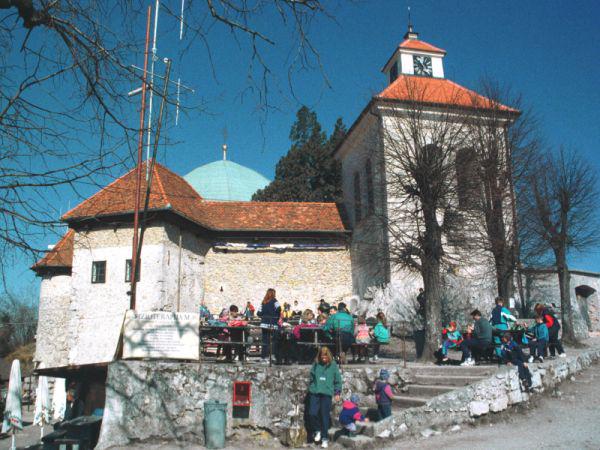
Šmarna Gora, a prominent hill just north of Ljubljana, is best known as a destination for day trippers from the city seeking unspoiled nature, but the church that graces the top of the hill is a surprisingly rewarding for history and art buffs.
The Church of the Virgin Mary lies near the summit of Šmarna Gora, at an altitude of approximately 670 meters. The first church on the spot was probably built in the early 13th century, but the earliest written records date from the early 14th century.
What is certain is that the church quickly became an important pilgrimage destination. Over the years, defensive walls were built because of the threat of Ottoman incursions from the south. In 1432, a Gothic church with two naves and no fewer than nine altars replaced the original structure.
But the popularity of the church among pilgrims meant that even the Gothic church eventually became too small. In the 18th century, a famed Slovenian architect named Gregor Maček was asked to come up with a more modern design. He created a Baroque, twin-domed church that survives to this day. The church was built with the financial assistance of villagers who lived around Šmarna Gora.
The interior of the church was even more impressive than the exterior. Another established Slovenian artist, Matevž Langus, was selected to paint the frescoes, the most remarkable of which is a trompe l’oeil portrayal of the Assumption of the Virgin in one of the domes. It depicts the Virgin Mary’s voyage from the Earth to the Heavens as seen by crowds of pilgrims and other onlookers.
One of the onlookers in the fresco is Jakob Aljaž as a baby. Aljaž grew up in one of the villages at the base of Šmarna Gora and helped out Langus with the fresco when he was a child. He later became a leading Slovenian poet and mountaineer; he also served as a priest in the church. The belfry now inlcudes a bust of Aljaž by the 20th century Slovenian sculptor France Kralj.
These days, Šmarna Gora is one of Slovenia’s most visited hills, but few health-conscious urbanites stop to examine the Church of the Virgin Mary. Those who do are rewarded with some of the most interesting examples of religious art and architecture in the Slovenian countryside.

































































